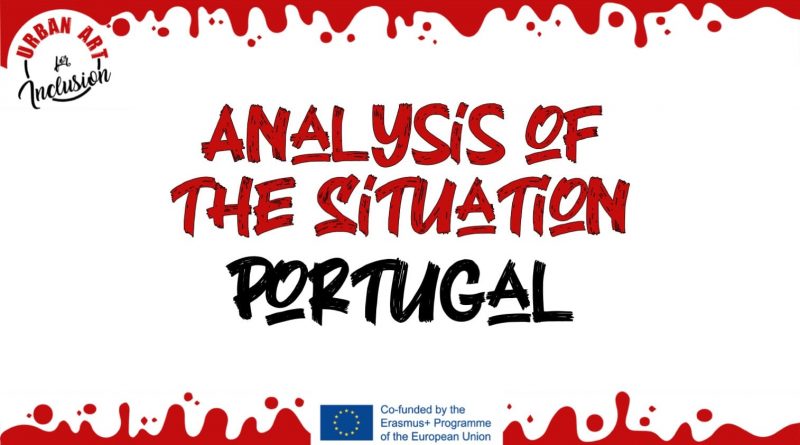Analysis of the situation: Portugal
In the frame of Local Activities I, each project organisation had to analyse the situation of young migrants and urban art in its country. Here you have a summary of the text written by Associação de Artistas Urbanos e de Transformação Social (AAUTS) concerning the situation of Portugal.
MIGRATION:
In Portugal there are about 700,000 immigrants of various nationalities, and these are the 5 countries with the largest immigrant populations: Brazil, Cape Verde, United Kingdom, Romania and Ukraine. Besides Cape Verde, there are also many immigrants from other African countries such as Angola, Guinea-Bissau and São Tomé and Príncipe.
Despite being a member of the European Union, Portugal is a country with a stagnant and weak economy, which does not produce enough to redistribute to the population and thus supporting citizens who are in a situation of exclusion, a problem that has affected immigrants in a more accentuated way, especially those of African origin, without forgetting the Gypsy community.
The difficulties that are more accentuated are labour exploitation, low wages, lack of equal opportunity, lack of social support, lack of opportunity to continue studies, marginalization in school content, labour discrimination, difficulty in access to higher education, lack of alternative education, misinformation, judicial injustice and very low political representation.
Although there are some government programmes to support the inclusion of immigrants, the lack of information and the few resources that these programmes make available leave out many young people, especially those who do not have behind an association. There is also some lack of pro-activity and the need for more tools to promote the resilience of people in relation to the situation of social exclusion.
URBAN ART:
In Portugal, urban art emerged with the breakdance movement in the 80s. In the 90’s, graffiti and rap were added to break dance and it was on the Cascais line (in Carcavelos) and Sintra line (in Amadora) that the first graffiti appeared. Rap started to gain strength on the south bank of the Tejo River, with the first groups to release their first rhymes, which gave origin to the first Rap music album Rapública in the mid 90’s. Many of these artists were young people of African descent or origin, along with a few Portuguese of origin. At the same time, in those social neighbourhoods mostly inhabited by Africans, what is today called “Rap Creole”, sung in Cape Verdean Creole, was born.
Today, after almost 40 decades since this art form appeared, Lisbon is considered one of the European capitals of graffiti art, with many murals made in different styles. Much of this is due to the following artists: Vhils, Bordalo II, Odeith, Nomem, Add Fuel, Mar, Hazul, Pantónio, Styler, Utopia and others, the first three being on the list of best worldwide writers. Graffiti writers are in their majority white, sons of Portuguese, with medium and higher education levels, are mostly men, in their age range of 25 to 40 years old. We can notice more and more the presence of female writers, marking their presence with lots of murals spread around Lisbon. When it comes to rappers, most of them are quite young and of African origin, with an average age from 20 to 35 years old, but also, except for some older ones, who have been rapping since the 90’s. This group has for the most part a medium and basic level of education. The rap they make it portrays the situation of exclusion in which many of them live. There is also a very strong presence of MCs of Portuguese origin in general, including some female rappers, aged between 20 and 35.

